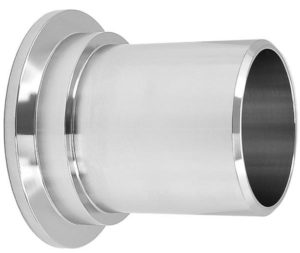
The most basic difference between grade 304 and grade 316 stainless steels is that 316 tends to have more nickel and a bit of molybdenum in the mix. Though the stainless steel 304 alloy has a higher melting point, grade 316 has a better resistance to chemicals and chlorides (like salt) than grade 304 stainless steel. 316 has better resistance to acids, alkalis, and chloride pitting. 316 has a maximum use temperature of 800 degrees C.
The increased nickel content and the inclusion of molybdenum makes grade 316 stainless steel a bit costlier than grade 304 per ounce of material. But where grade 316 stainless proves superior is its increased corrosion resistance – particularly against chlorides and chlorinated solutions. This makes grade 316 stainless particularly desirable for applications where exposure to salt or other powerful corrosives is an issue.
In conclusion, 316 is harder to machine and more expensive than 304 while offering no real advantage for high vacuum applications. Talking to chamber manufacturers that used have both, they state seeing no difference after the chambers had run a few times to condition them.
Mack Vacuum carries many 304 stainless steel products such as 304 stainless steel flanges as well as various 316 stainless steel vacuum components. If there is an item you cannot find in our vacuum parts online store, please feel free to contact us.
